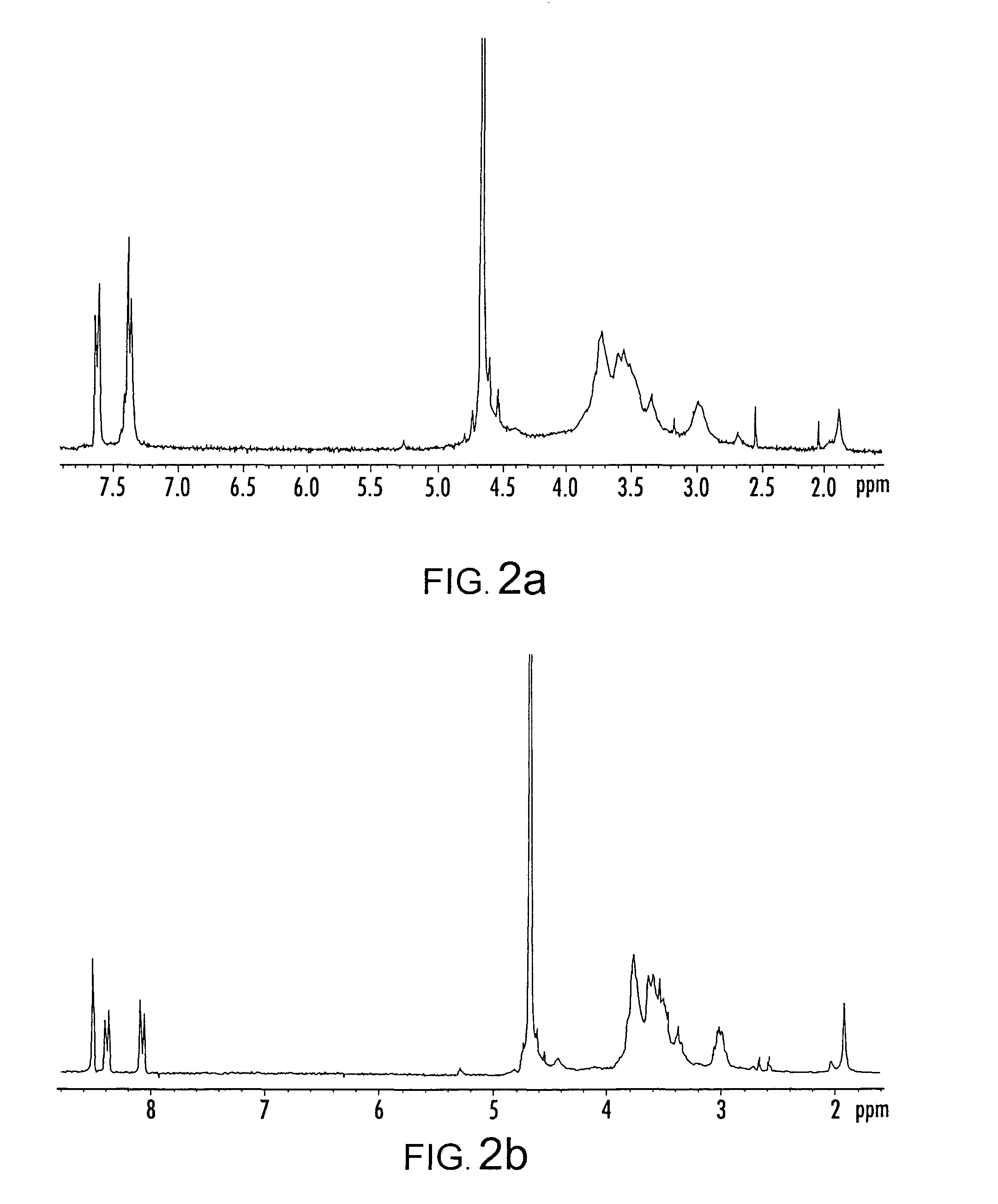Functionalized organic oligomers using homogeneous modification method for molecular binding
a technology of functionalized organic oligomers and molecular binding, which is applied in the direction of biocide, synthetic polymer active ingredients, amide active ingredients, etc., can solve the problems of low degree of substitution, low yield of functionalized chitosan products, and general difficulty in chemical modification of chitosan
- Summary
- Abstract
- Description
- Claims
- Application Information
AI Technical Summary
Benefits of technology
Problems solved by technology
Method used
Image
Examples
examples
[0045]The present invention is further illustrated by the following specific examples, which should not be construed as limiting the scope or content of the invention in any way.
[0046]Oligochitosan prepared by enzymatic degradation was obtained from E-ZE Co. LTD (Korea) and used without further purification. The average molecular weight and moisture, as determined by the supplier, were 1,150 Da, and 8.0%, respectively. Dinitrobenzenesulfonyl chloride, benzenesulfonyl chloride and amitriptyline were purchased from Aldrich and used as received.
[0047]Before the reaction, the chitosans were dried in a vacuum. Three grams of oligochitosan powder were dissolved in DMSO (15 mL) containing dinitrobenzenesulfonyl chloride (2.5 g) or benzenesulfonyl chloride (3.3 g). The reaction mixture was stirred and left for two days at room temperature. The resulting modified oligochitosan product was precipitated by adding ethanol, and subsequently separated by centrifugation. The final product was soxh...
PUM
| Property | Measurement | Unit |
|---|---|---|
| molecular weight | aaaaa | aaaaa |
| molecular weight | aaaaa | aaaaa |
| molecular weight | aaaaa | aaaaa |
Abstract
Description
Claims
Application Information
 Login to View More
Login to View More - R&D
- Intellectual Property
- Life Sciences
- Materials
- Tech Scout
- Unparalleled Data Quality
- Higher Quality Content
- 60% Fewer Hallucinations
Browse by: Latest US Patents, China's latest patents, Technical Efficacy Thesaurus, Application Domain, Technology Topic, Popular Technical Reports.
© 2025 PatSnap. All rights reserved.Legal|Privacy policy|Modern Slavery Act Transparency Statement|Sitemap|About US| Contact US: help@patsnap.com



